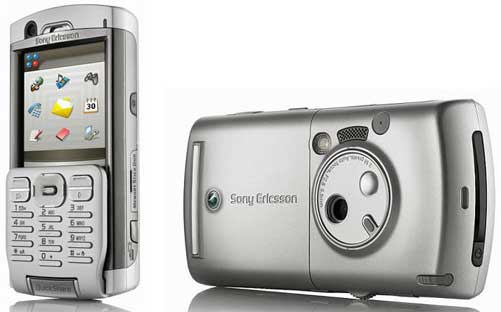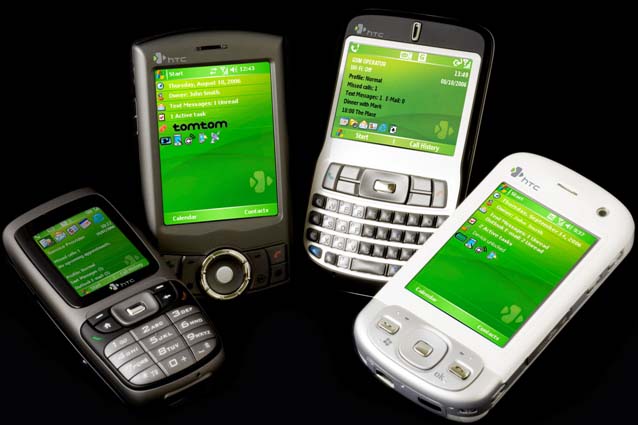Worldwide Combined PDA and Smartphone Shipments Market
5 October 2006 by axxxr Worldwide Combined PDA and Smartphone Shipments Market Grew 57 Percent in the First Half of 2006.
Worldwide shipments of PDAs and smartphones combined totaled 42.1 million units in the first half of 2006,a 57 percent increase from the same period last year, according to Gartner, “Japan overtook Europe, Middle East and Africa (EMEA) to become the largest market for smartphones in the first half of 2006," said Roberta Cozza, principal research analyst in Gartner’s computing platforms worldwide group. “Japan now accounts for 33 percent of the worldwide smartphone market. North America was the only region where sales of PDAs Market Overview In Japan, smartphone shipments grew 153 percent in the first half of the year, despite a decline of 22 percent in the second quarter of 2006. Japanese smartphone shipments totaled 11.6 million units in the first half of 2006. This allowed Japan to capture the global lead from EMEA, which grew 26.3 percent. EMEA accounted for 30 percent of the worldwide smartphone market, down from 42 percent in the first half of 2005. The Asia Pacific region overall remained very strong during the first half of 2006, accounting for 29 percent of the worldwide market. Shipments in North America grew 104 percent in the first half of 2006, however, its share of the global smartphone market remained fairly stable at 6.3 percent. North America remained the only region where PDAs continue to outsell smartphones. In the first half of 2006, the region accounted for 45 percent of worldwide PDA shipments, slightly up from the same period in 2005. In the first half of 2006, the EMEA and the North America regions accounted for 85 percent of the PDA market. Vendor Perspective Nokia accounted for 42 percent of the combined PDA and smartphone market in the first half of 2006 and commanded half of the global smartphone market. "The company’s strategic focus remains on the consumer smartphone segment, so more favourable seasonal trends in the second half of the year and the introduction of new models should help Nokia achieve higher Motorola accounted for 5.3 percent in the combined PDA and smartphone market. Motorola’ smartphone shipments grew 103.5 percent in the first half of 2006, which represented the highest year on year growth among the top 5 vendors. This performance was driven by the success of Motorola’s Linux-based devices in China. However, Motorola is not making significant progress with its Microsoft and Symbian-based smartphones and shipments of the Motorola Q have been hampered by the minimum $80 monthly service plan offered by Verizon. In the first half of 2006, RIM accounted for 6.5 percent of the combined PDA and smartphone market, with shipments up 60 percent year on year. RIM smartphone shipments represent 36 percent of all BlackBerry mobile devices, up from 9 percent in the same period last year. The company retained its leadership position in the global PDA market in the first half of 2006, with an increase of 13.5 percent from the same period last year.“ As mobile email expands beyond the executive segment, RIM is responding with a new hardware strategy in the form of their new Pearl device to tackle prosumer (professional consumer) and consumer markets In the first half of 2006, Palm accounted for 5 percent of the combined PDA and smartphone market, down from 8 percent in the first half of 2005. Palm saw a decrease of 26 percent in the first half of 2006. “Palm’s PDA business continues to decline as the company shifted its focus on sales of its Treo smartphones, which accounted for 57 percent of Palm’s mobile device shipments in the first half of 2006," Mr. Kort added. 2006 Forecast According to Gartner’s latest forecast, smartphone shipments will increase by 66 percent to reach 81 million units in 2006. “The stronger consumer demand which generally characterises the second half of the year will allow higher volume growth in smartphones. Symbian licensees will continue to drive the market and we can expect new product introductions to focus on advanced features, fashion and rich multimedia functionalities which will fuel demand," Ms Cozza added. “Going forward,players in the smartphone segment will need to overcome the challenge of selling the benefits of smartphones over less expensive enhanced phones In 2006, Gartner expects the PDA market to increase by 6.3 percent to 16 million units. The market will continue to be driven by broader availability of cellular-enabled PDAs from wireless carriers. Gartner estimates that 53 percent of all PDAs shipped in the first half of 2006 Additional information is available in the Gartner’s PDA and Smartphone quarterly statistics programme. The summary of the research can be found at:gartner
|












 RSS feed
RSS feed